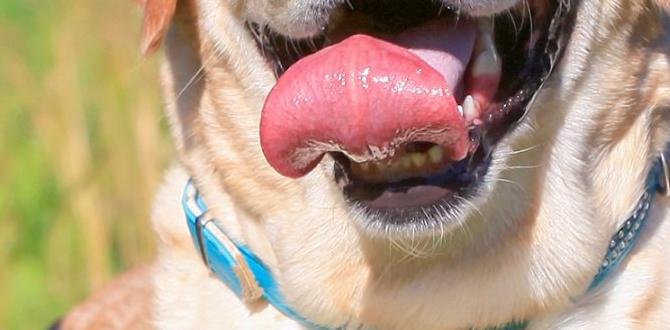Unlock Your Canine Companion: Effortless Strategies to Train Your Stubborn Dog
Train stubborn dog behavior often feels like navigating a labyrinth with a furry, four-legged enigma. You’ve tried everything you’ve read, followed every online guide, but your canine has a mind of their own, seemingly immune to your most valiant efforts. The good news is, “stubbornness” in dogs isn’t usually a willful defiance, but rather a misunderstanding of expectations, a lack of motivation, or even a genuine difficulty in processing certain commands. Instead of battling their will, the key lies in understanding their perspective and employing smarter, not necessarily harder, training methods. This article will delve into the most effective, often effortless, strategies to finally see progress with your determined pup.
Understanding the “Stubborn” Mindset
Before diving into techniques, it’s crucial to grasp what might be behind your dog’s perceived stubbornness. Often, what appears as stubbornness is actually:
Lack of Clarity: Your dog might not fully understand what you’re asking. Subtle body language or inconsistent cues can lead to confusion.
Low Motivation: If there isn’t a strong enough reward for the desired behavior, your dog simply won’t see the point in doing it. Kibble from their regular meal might not cut it for a high-value, attention-grabbing behavior.
Underlying Needs: A dog that’s bored, anxious, or not getting enough mental and physical exercise might present as “stubborn” because they’re overwhelmed or seeking alternative forms of stimulation.
Breed Predispositions: Certain breeds were developed for independent thinking and problem-solving (e.g., some hounds, terriers). This can sometimes manifest as what we interpret as stubbornness.
Recognizing these underlying factors is the first, often overlooked, effortless step toward effective training.
Effortless Techniques to Train Stubborn Dog Companions
Here are some of the most effective strategies that require minimal fuss and maximize positive outcomes:
1. The Power of Positive Reinforcement (and High-Value Rewards)
This is the cornerstone of successful dog training, especially for those who seem resistant. Forget punishment; it breeds fear and erodes trust. Instead, focus on rewarding desired behaviors.
Identify Irresistible Rewards: For a stubborn dog, generic treats might not be enough. Think small pieces of cooked chicken, cheese, hot dogs, or even a favorite squeaky toy for play-motivated dogs. Experiment to find what truly makes their tail wag.
Timing is Everything: The moment your dog performs the desired action (even a partial attempt!), immediately mark it with a verbal cue like “Yes!” or a clicker, followed by the reward. This creates a clear association between the action and the positive consequence.
Be Enthusiastic: Your energy is contagious. A happy, encouraging tone when your dog gets it right will reinforce the positive experience far more than a stern command when they don’t.
2. Break It Down: The Art of Tiny Increments
Complex behaviors can overwhelm any dog, especially one that struggles with focus. The trick to making training effortless is to simplify.
Small Steps: Instead of asking for a perfect “sit” in a distracting environment, start with just getting them to move their rear slightly. Reward that. Then, ask for a bit more. Gradually build up to the full behavior.
Short, Frequent Sessions: Ten minutes of focused training multiple times a day is far more effective than one long, frustrating hour. This keeps your dog engaged and prevents them from becoming bored or tired.
Manage the Environment: Start training in a quiet, familiar space with zero distractions. As your dog masters the command there, gradually introduce more challenging environments.
3. Make It a Game: Gamification for Engagement
Turning training into a fun activity can be incredibly effective for dogs who have a shorter attention span or seem less motivated by traditional rewards.
Hide-and-Seek: For recall, hide yourself and call your dog. When they find you, shower them with praise and a high-value reward.
Treasure Hunts: Hide treats or their favorite toy and encourage them to “find it.” This taps into their natural sniffing instincts and makes them work for their reward.
Interactive Toys: Use puzzle feeders or treat balls to challenge their problem-solving skills while also providing a reward.
4. Consistency is Key (But Not Rigidity)
While consistency is vital for any dog, stubborn dogs particularly benefit from predictable routines.
Uniform Cues: Ensure everyone in the household uses the same verbal cues and hand signals for commands. Inconsistency can be a major source of confusion.
Set Expectations Clearly: If a behavior is not allowed, ensure it’s consistently discouraged (through redirection, not punishment). For example, if jumping is an issue, it should never be rewarded, even by accident.
Don’t Give Up on a Bad Day: Some days will be better than others. Rather than getting frustrated, take a step back, simplify the exercise, and end on a positive note.
5. Leverage Their Natural Drives
Every dog has innate instincts. Tapping into these makes training feel effortless because you’re working with their nature, not against it.
Herding Breeds: If you have a herding breed, use their natural instinct to “gather” by playing games that involve moving objects or herding stuffed animals.
Scent Hounds: Utilize their incredible sense of smell with scent-based games and nose work activities.
Athletic Breeds: Provide ample physical outlets. A tired dog is a well-behaved dog. Agility, long walks, or vigorous play sessions can significantly impact their focus during training.
6. Patience and Perspective
Ultimately, the most “effortless” aspect of training a stubborn dog is your own mindset.
Celebrate Small Victories: Did your dog offer a sit for two seconds longer than yesterday? That’s progress! Acknowledge and celebrate it.
Avoid Comparing: Every dog learns at a different pace. Focus on your dog’s individual journey.
Seek Professional Help: If you’re truly stuck, a certified positive-reinforcement trainer can offer tailored advice and hands-on guidance. This isn’t a sign of failure, but a smart investment in your dog’s well-being and your sanity.
Training a dog that exhibits “stubborn” traits doesn’t require wrestling matches or prolonged power struggles. It demands understanding, creativity, and a commitment to positive reinforcement. By employing these effortless tips, focusing on what motivates your unique companion, and maintaining a patient outlook, you can build a stronger bond and unlock your dog’s true potential, transforming those perceived stubborn moments into harmonious cooperation.
Meet Elyse Colburn, the devoted canine companion and storyteller behind the enchanting world of “Tales, Tails, and Adventures Unleashed.” A passionate dog enthusiast with a heart full of paw prints, Elyse Colburn shares heartwarming tales and insightful adventures, celebrating the joy, loyalty, and endless antics that make every dog a true hero. Join Elyse Colburn on this tail-wagging journey, where every post is a love letter to our four-legged friends.





